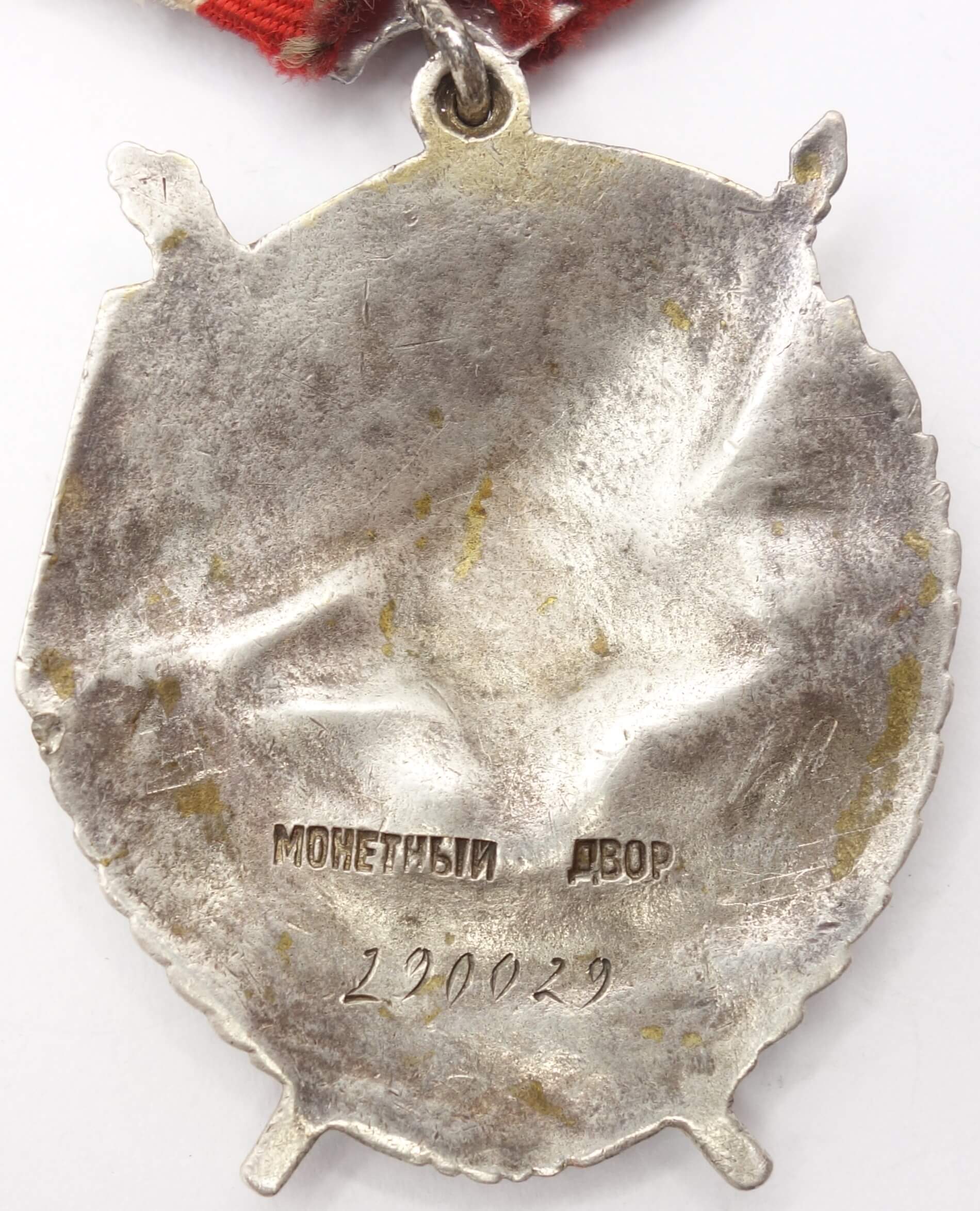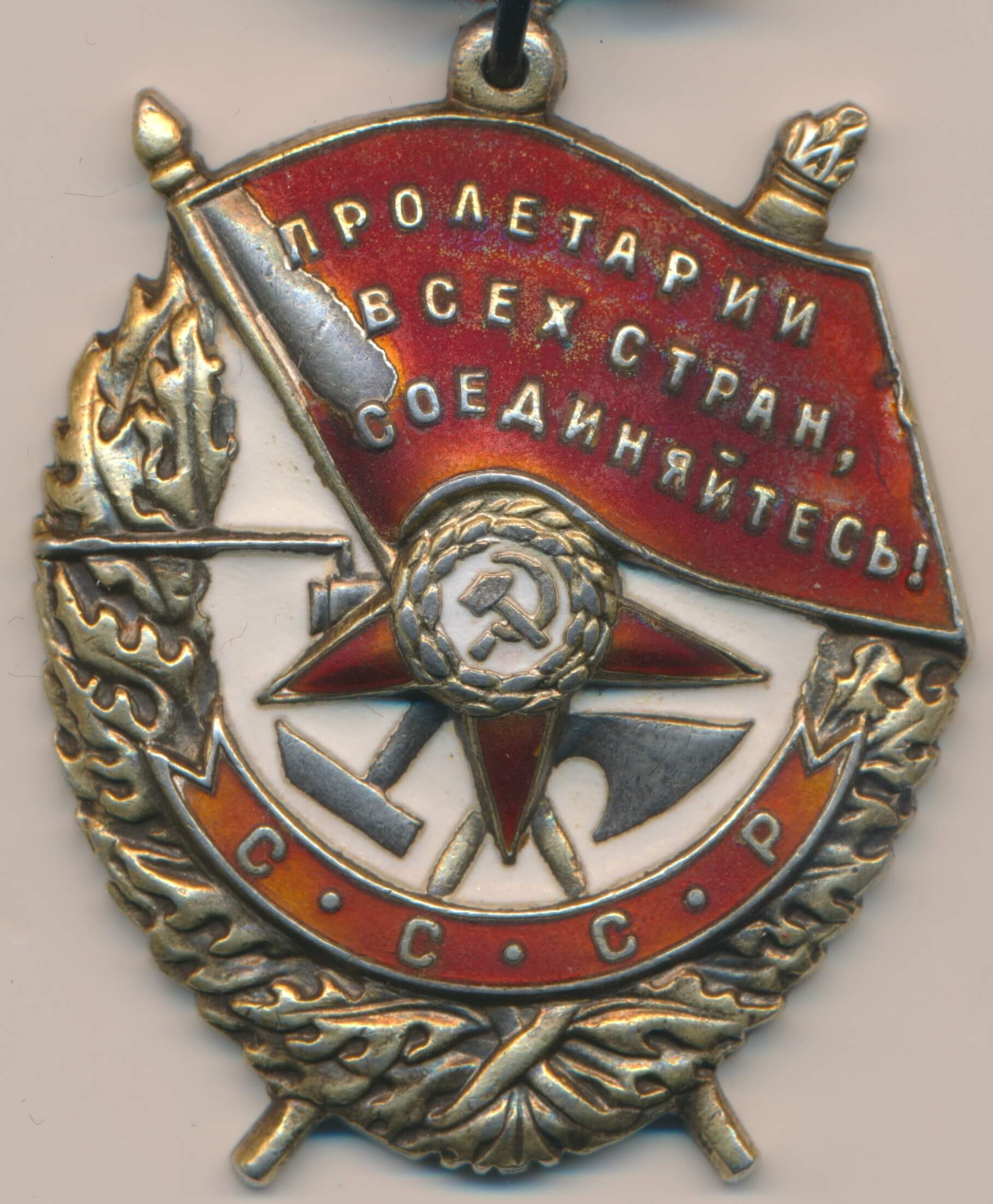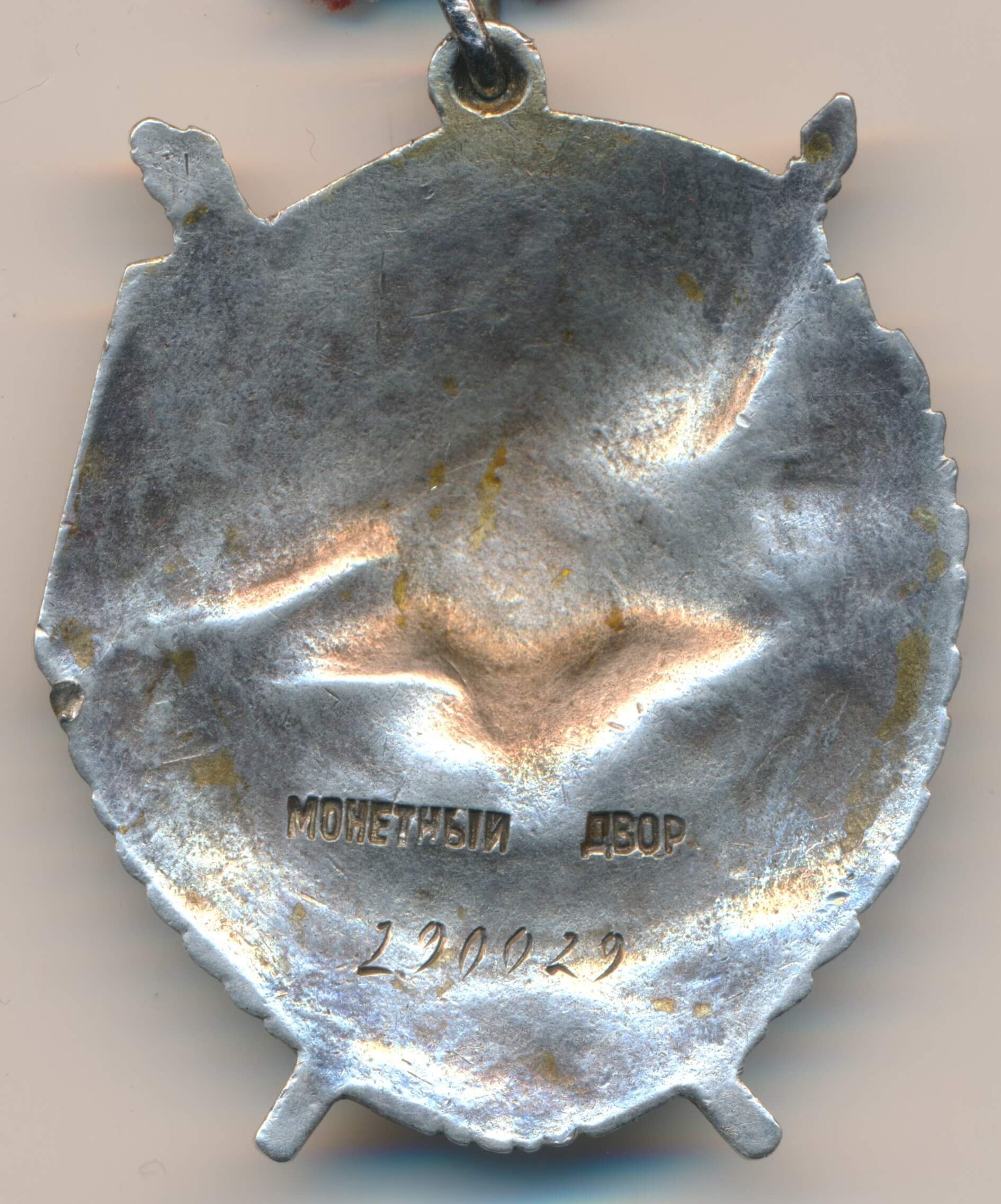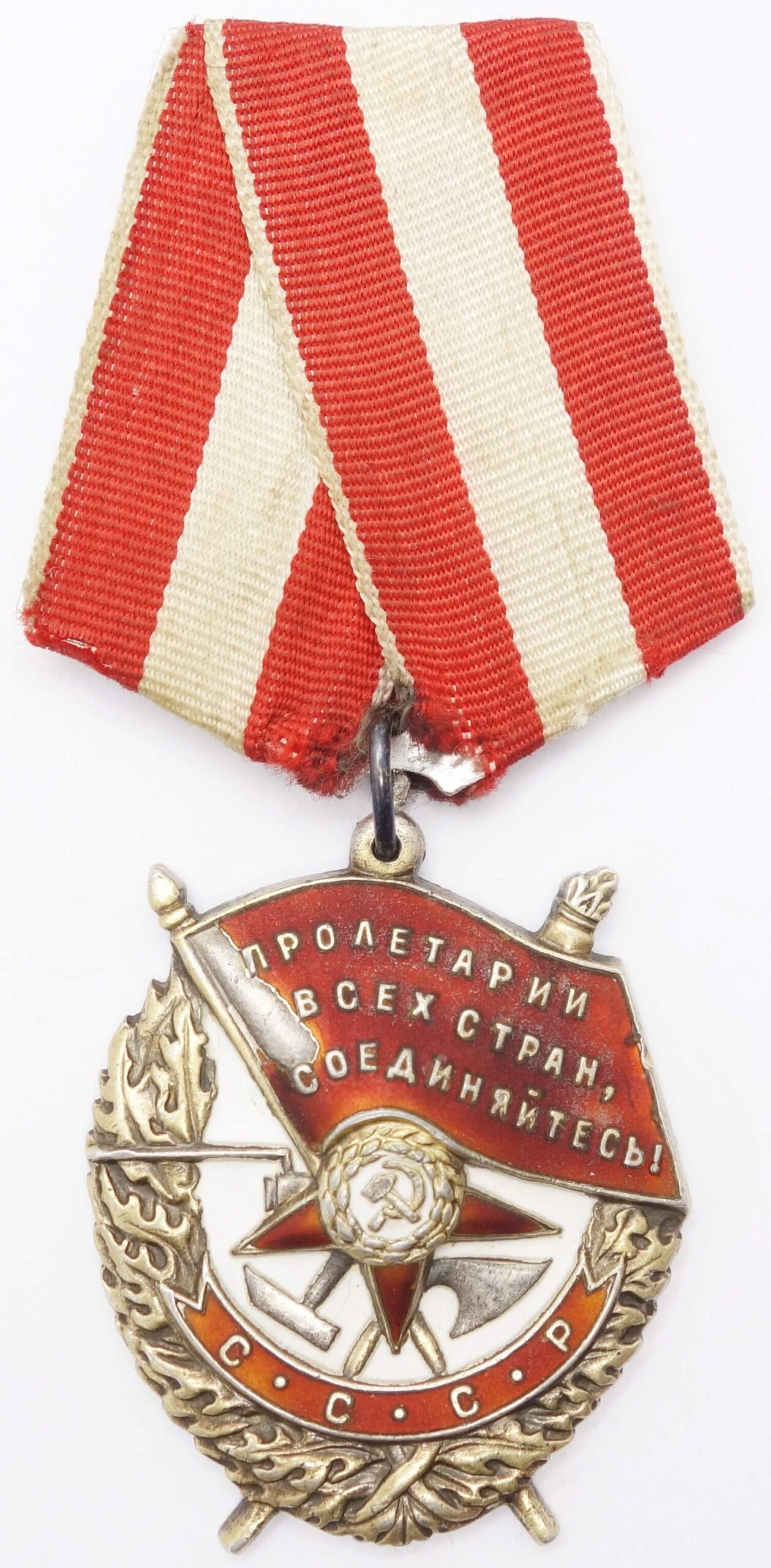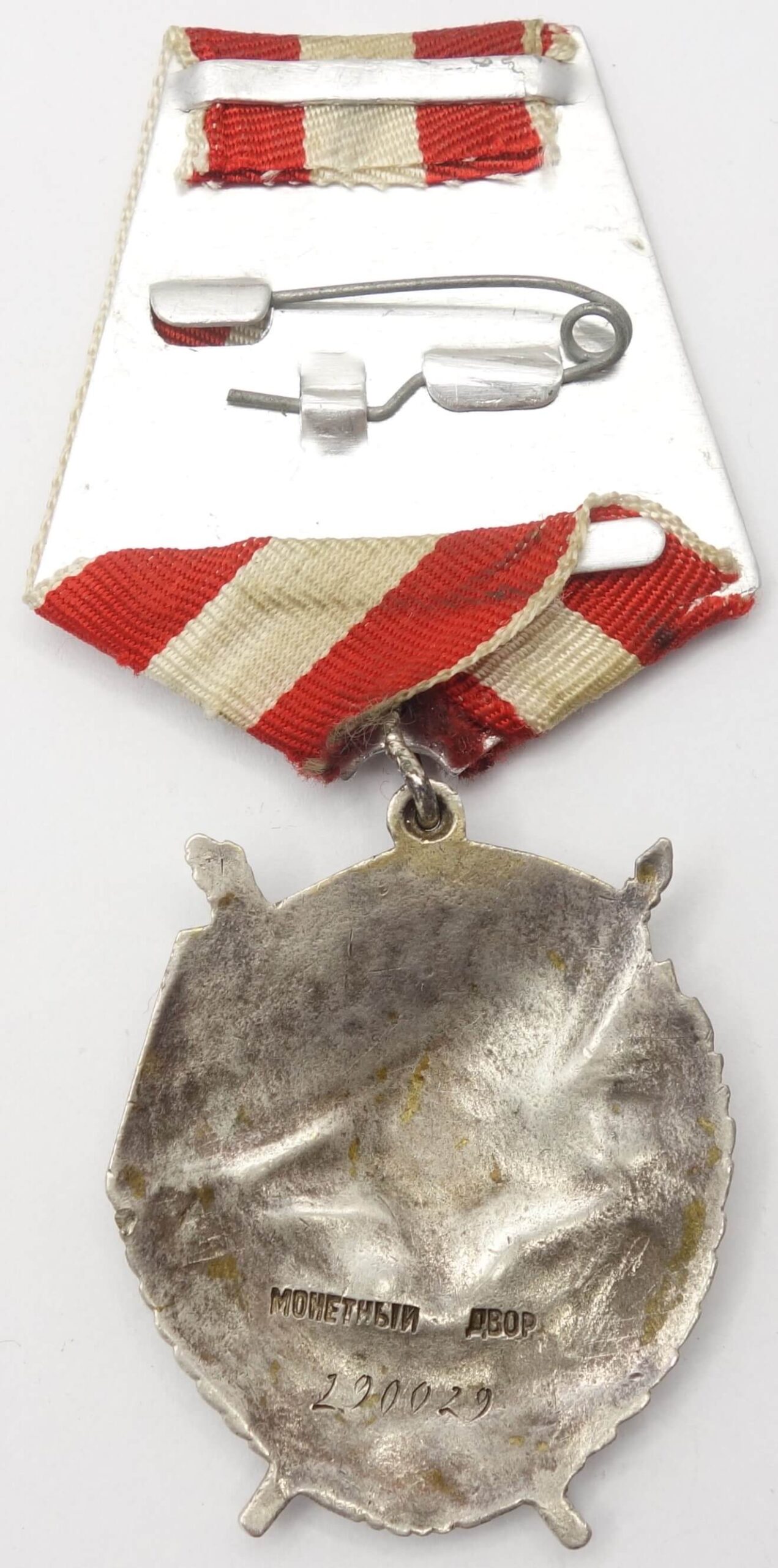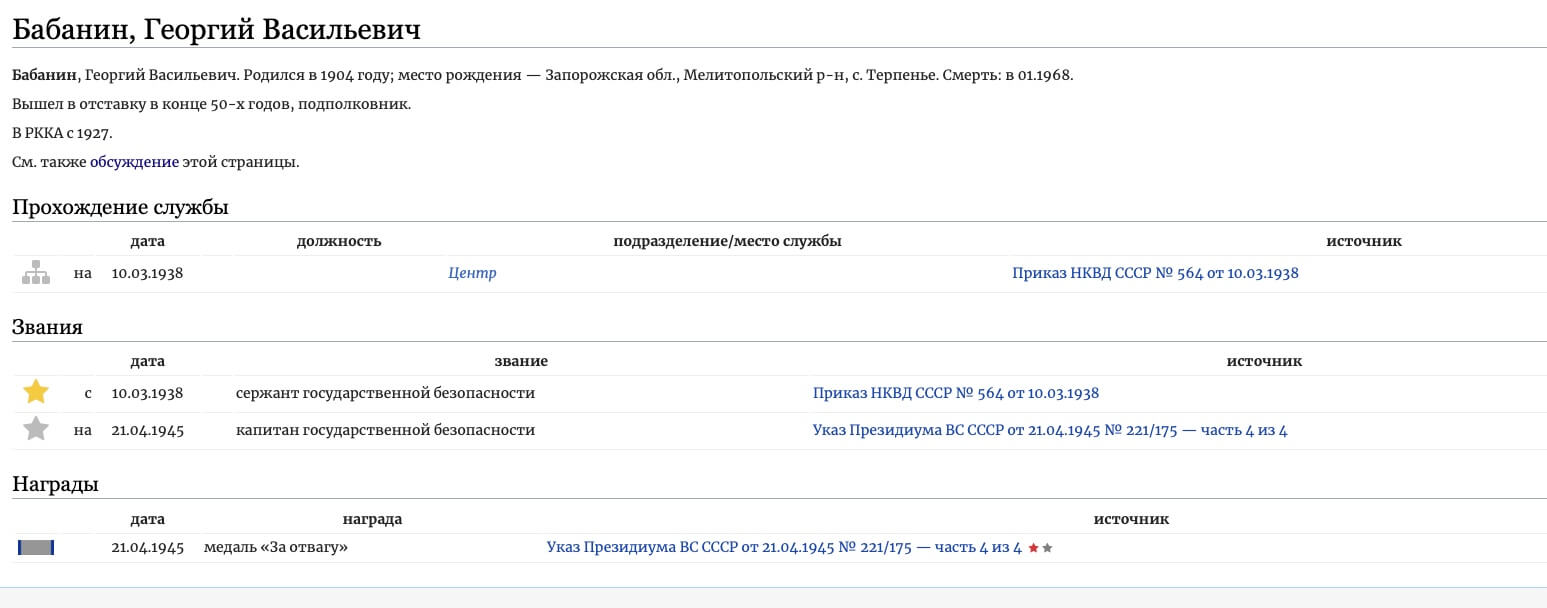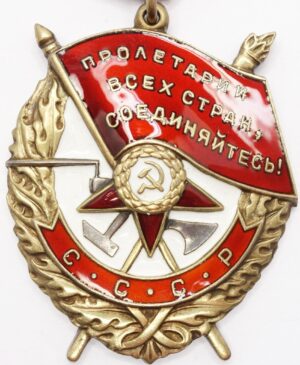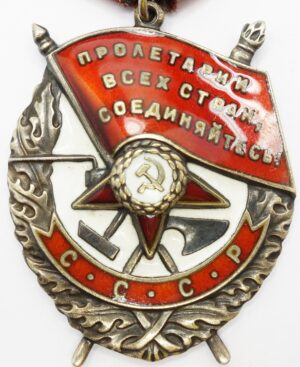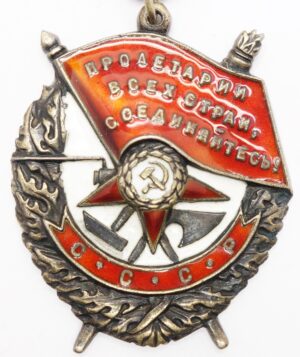Description
Researched Soviet Order of the Red Banner #290029
Awarded to Major Georgij Vasilievich Babanin (Георгий Васильевич Бабанин)
Operative investigator of the central Berlin operative task force
Made of solid silver and enamels. Measures 45.34 mm in height, 37.65 mm in width and it weighs 27.1 gram without its suspension. The serial number and mint mark are located at the 6 o’clock position of its reverse.
This Order of the Red Banner is in nice condition with much gold plating present. There are several dings and scratches on both sides but its details are crisp and perfectly visible. The enamel shows some pitting and a larger chip on the top left side of the large banner. Both sides show a medium patina and its connection ring has been cut.
The translation of the register card can be found here
At the time of awarding Major Babanin was an investigator of the central Berlin SMERSH operative task force. Some interesting information on this can be read below:
Report
From: A.A.VADIS – the Head of the SMERSH directorate of 1 Belorussian front.
To: V.S.ABAKUMOV – The Head of the Main Counter-Intelligence Directorate “SMERSH” of the People Commissariat of defence of USSR.
23 April 1945
“To carry out operational counter-intelligence work in Berlin at the SMERSH Directorate of the front, a central Berlin operative task force was created. It was led by the Deputy Head of the SMERSH Counterintelligence Directorate of the 1st Belorussian Front, Major General G.A. MELNIKOV. According to the number of Berlin urban districts, 20 regional operational task forces were created (on the right side of the Spree River – 9 districts, on the left side – 11 districts). These were led by senior officials of the SMERSH counterintelligence department of the front and the SMERSH counterintelligence departments of the armies.
All operational task forces in Berlin were supplied with information about the deployment of the German intelligence and counter-intelligence agencies, government and party institutions, information about anti-Soviet and White émigré organisations located in Berlin, materials from the search for criminals who lived and worked in Berlin.
26 Berlin natives were selected among the anti-Fascist Germans, prisoners of war, German soldiers and officers, as well as the civilian population.
These locals know well the institutions and organizations located in Berlin, they have knowledge of the persons of interest. All these 26 local informants will be used by the task forces as identifiers of the persons of interest.
More additional identifiers are being drafted among the German prisoners of war captured during the last offensive operations in the Berlin sector. After our troops entered eastern districts of Berlin, two operational groups have already began their work, headed by the deputy head of the SMERSH counterintelligence department of the 1st Tank Army, Lt.Col. ARKHIPENKOV and Lt.Col. MIKHAILOV. All operative work in the suburbs of Berlin is assigned to the “SMERSH” counterintelligence departments of the armies in their corresponding sectors of operation.”
=================================
Some more info:
The structure and number of the Smersh task forces were determined in accordance with the local operational situation. Usually, each consisted of 6 to 30 operatives, sometimes more.
The task forces missions was arrest of traitors to the Motherland, accomplices and employees of the invaders, residents and agents of enemy intelligence and counterintelligence agencies. These arrests were carried out on the basis of the NKVD guidelines and the alphabetical wanted men lists. The groups also identified and arrested staff of the German police bodies, the prisons and concentration camps leadership, military commandants, prosecutors, investigators, members of military courts and tribunals, heads of regional, district, county councils and councils, city mayors, members of pro-Fascist parties, leaders of large economic and administrative organisations, newspapers and magazines editors, authors of anti-Soviet publications, personnel of the armies combating USSR and the members of the Russian Liberation Army.
Further missions of the operative task forces: Searching the offices of the enemy intelligence agencies and reconnaissance and sabotage schools.
The school addresses wee to be determined and the time at which these schools were deployed at these addresses, schools type of activity (intelligence, counterintelligence, sabotage), the official staff and service personnel, residents who visited the schools, a thorough examination and search of the schools premises. Upon detection of an enemy intelligence officer – he was to be clandestinely detained, delivered to the task force headquarters for interrogation. The discovered intelligence was used establish presence of the enemy agents left behind.
Please contact us with questions

